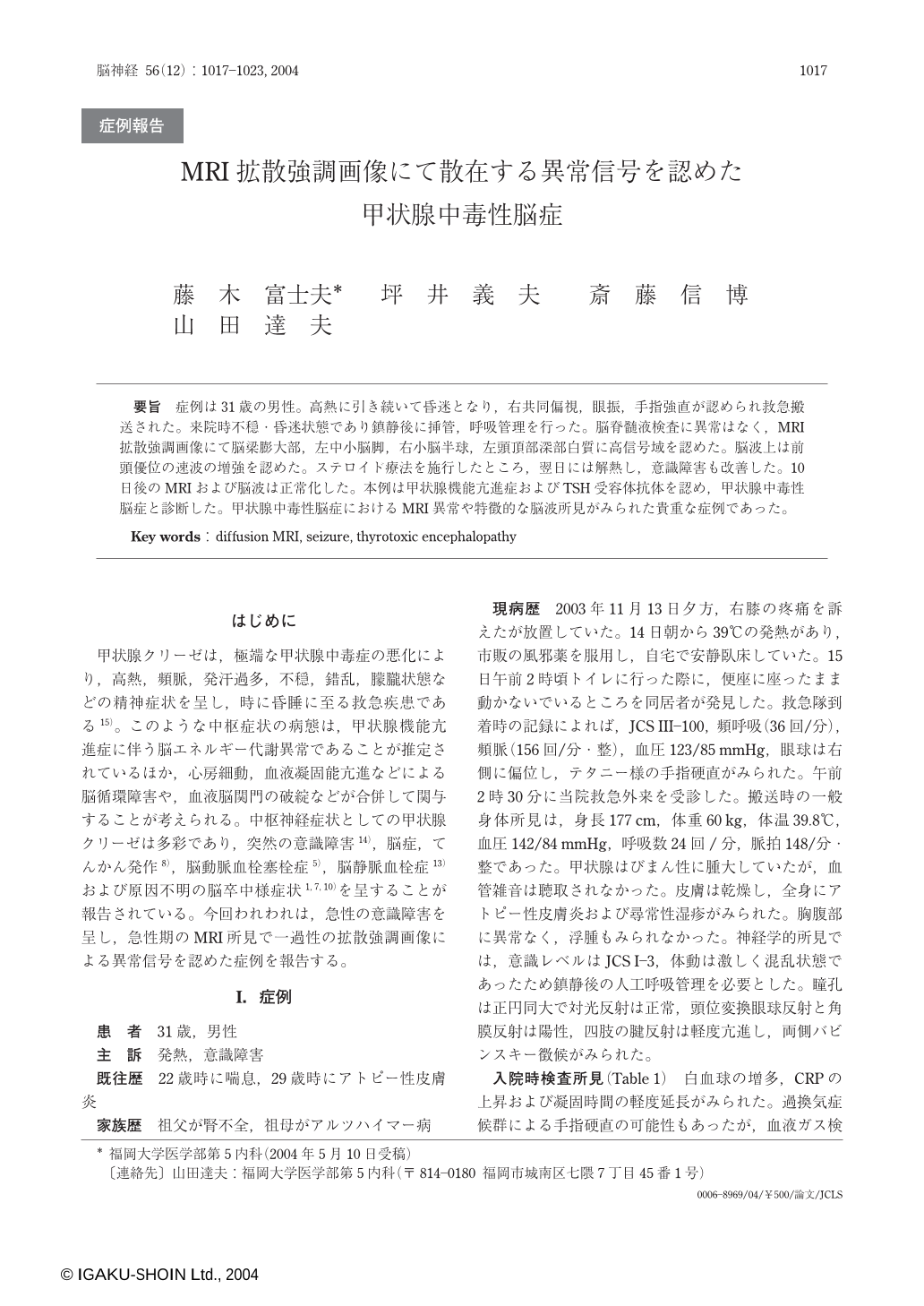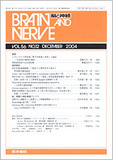Japanese
English
- 有料閲覧
- Abstract 文献概要
- 1ページ目 Look Inside
要旨 症例は31歳の男性。高熱に引き続いて昏迷となり,右共同偏視,眼振,手指強直が認められ救急搬送された。来院時不穏・昏迷状態であり鎮静後に挿管,呼吸管理を行った。脳脊髄液検査に異常はなく,MRI拡散強調画像にて脳梁膨大部,左中小脳脚,右小脳半球,左頭頂部深部白質に高信号域を認めた。脳波上は前頭優位の速波の増強を認めた。ステロイド療法を施行したところ,翌日には解熱し,意識障害も改善した。10日後のMRIおよび脳波は正常化した。本例は甲状腺機能亢進症およびTSH受容体抗体を認め,甲状腺中毒性脳症と診断した。甲状腺中毒性脳症におけるMRI異常や特徴的な脳波所見がみられた貴重な症例であった。
A 31-year-old man was transferred to our emergency room(ER) with acute onset of high-grade fever and consciousness disturbance. His consciousness at ER was severely disturbed with restlessness. No apparent focal neurological signs were seen. MRI with diffusion-weighted images(DWI) showed high signal intensities at the corpus callosum, left cerebellar hemisphere, left deep white matter and right middle cerebellar peduncle. These lesions were low signals in apparent diffusion coefficient(ADC) map, indicating cytotoxic edema. EEG showed enhanced fast waves seen in predominantly frontal regions. CSF examination was normal except elevated initial pressure of 210mmH2O. He was treated with high dose dexamethasone and acyclovir. His consciousness and high-grade fever with systemic inflammatory responses were dramatically improved after these treatments. Subsequent data showed hyperthyroidism with anti-thyroid stimulating hormone receptor antibodies. This case was thought to be a thyrotoxic encephalopathy with beneficial response to corticosteroid therapy. Abnormalities seen in DWI and EEG were normalized ten days later.
(Received : May 10, 2004)

Copyright © 2004, Igaku-Shoin Ltd. All rights reserved.


